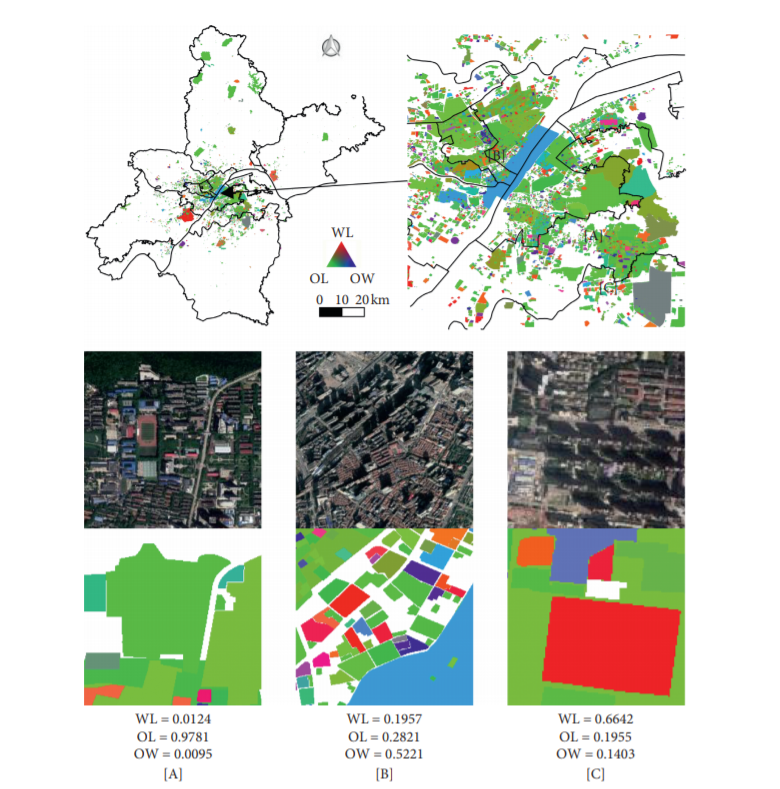Abstract
+e spatial distribution pattern of jobs and housing plays a vital role in urban planning and traffic construction. However, obtaining the jobs-housing distribution at a fine scale (e.g., the perspective of individual jobs-housing attribute) presents difficulties due to a lack of social media data and useful models. With user data acquired from a location-based service provider in China, this study employs a deep bag-of-features network (BagNet) to classify remote-sensing (RS) images into various jobshousing types. Considering Wuhan, one of the fastest developing cities in China, as a case study area, three jobs-housing types (i.e., only working, only living, and both working and living) at the land-parcel level are obtained. We demonstrate that the multiscale random sampling method can reduce the influence of image noise, increase the utilization of training data, and reduce network overfitting. By altering the network structure and the training strategy, BagNet achieved excellent fitting accuracy for identifying each jobs-housing type (overall accuracy > 0.84 and kappa > 0.8). For the first time, we demonstrate that urban socioeconomic characteristics can be obtained from high-resolution RS images using deep learning techniques. Additionally, we conclude that the total level of mixing within Wuhan is not high at present; however, Wuhan is continuously improving the mixture of jobs and housing. +is study has reference value for extracting urban socioeconomic characteristics from RS images and could be used in urban planning as well as government management.

Q.E.D.









